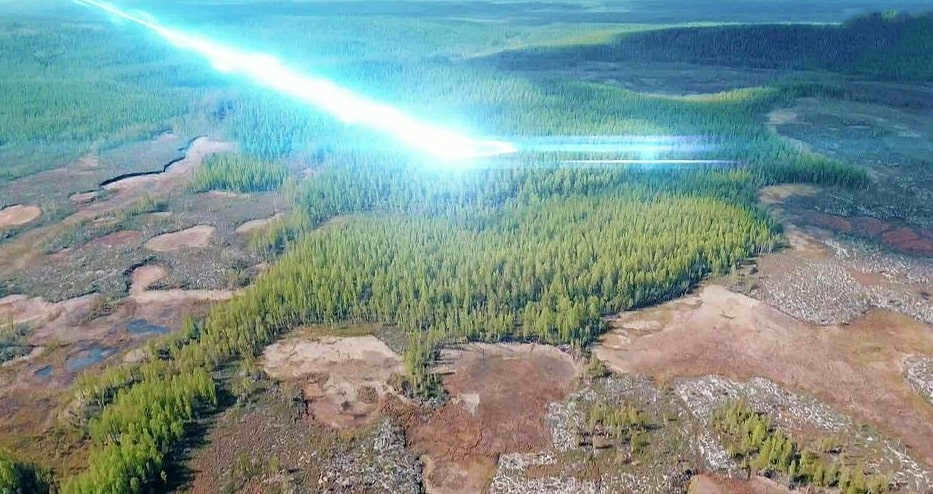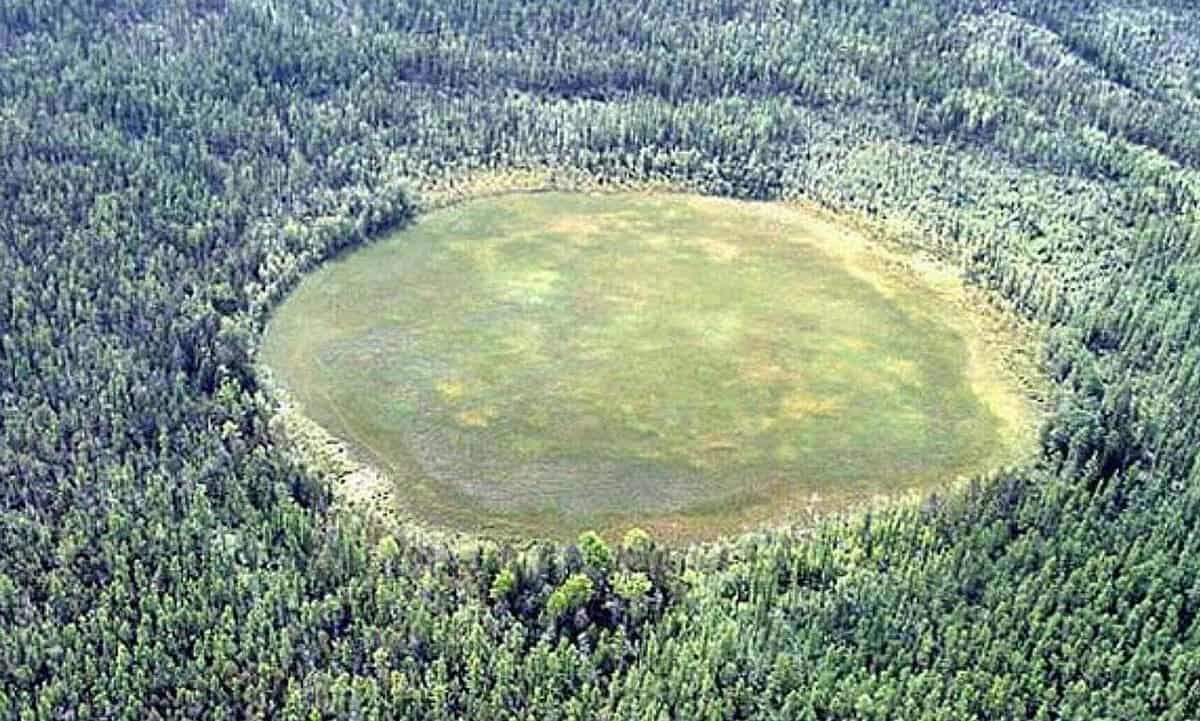On the morning of June 30, 1908, an extraordinary event unfolded above the Podkamennaya Tunguska river basin in Eastern Siberia. A magnificent fireball suddenly materialized and streaked across the sky, followed by an intense burst of light and a series of deafening explosions. One eyewitness even claimed that the heavens themselves seemed to split in two. The shockwave from the explosion traveled around the world twice over, causing devastation to 80 million trees and propelling individuals up to 50 kilometers away. In the days following this mysterious occurrence, peculiar phenomena occurred throughout the taiga. From June 30 to July 1, the night barely descended upon over 150 locations in Siberia, Central Asia, the European part of Russia, and Western Europe: luminescent clouds could be clearly observed at an altitude of approximately 80 km. Various hypotheses have been proposed regarding the nature of the Tunguska event, with the main ones being discussed on REN TV.
Deceptive Path
In 1921, a pioneering expedition to Siberia was led by Leonid Alekseevich Kulik, a Soviet expert in mineralogy and meteorite investigation. During this journey, he gathered information regarding the occurrences in the Tunguska taiga and, by analyzing them, formed theories about the actual extent of the calamity. Despite his belief that a comet collision might have caused it, the scientist tirelessly sought evidence of a massive meteorite, potentially fragmented into individual pieces, from the start to the end of his investigation.
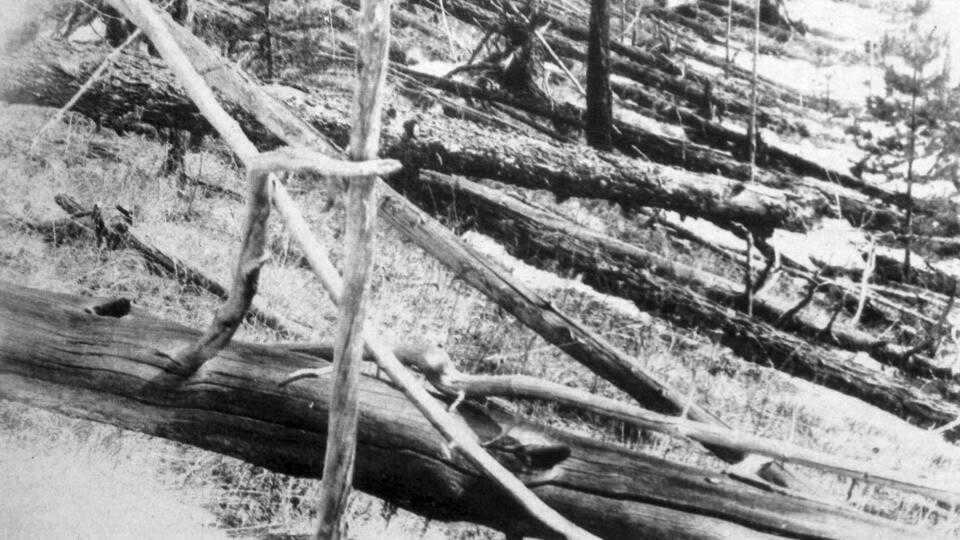
During the expedition, it was observed that the forest surrounding the area where the “Tunguska body” fell was fanned outwards from the center. Strangely, at the epicenter where the destruction should have been the most severe, the trees remained standing but were completely devoid of branches, resembling telegraph poles. The only explanation for such devastation was a tremendously powerful explosion. Another surprising discovery was the presence of water in the midst of the lifeless forest, resembling either a lake or a swamp. Kulik hypothesized that this could be a crater left behind by the impact of the fallen meteorite.
In 1928, the scientist embarked on another extensive expedition to the taiga. This time, they conducted topographic surveys of the surrounding area and performed magnetometric studies on the funnels in search of traces of the meteorite. Unfortunately, no evidence of the meteorite was discovered. Undeterred, the scientist led a third expedition the following year, this time equipped with drilling equipment and pumps to drain the sinkholes. After opening one of the sinkholes, it was discovered that they were not formed by a meteorite, but rather had a thermokarst origin.
In the late 50s and early 60s, the Tunguska phenomenon was subject to further investigation. K.P.Florensky and V.I.Vernadsky led expeditions to extensively survey the wooded area. All collected data pointed to the fact that the “Tunguska body” did not make contact with the Earth’s surface, but rather detonated in the atmosphere. Despite the absence of meteoric material in the vicinity of the disaster, this expedition discovered a completely new phenomenon – an unusually rapid growth of trees. This phase of studying the Tunguska meteorite allowed for the reconstruction of a physical map of the Tunguska explosion. However, the two crucial questions – the mechanism of destruction and the composition of the meteorite – remained unresolved.
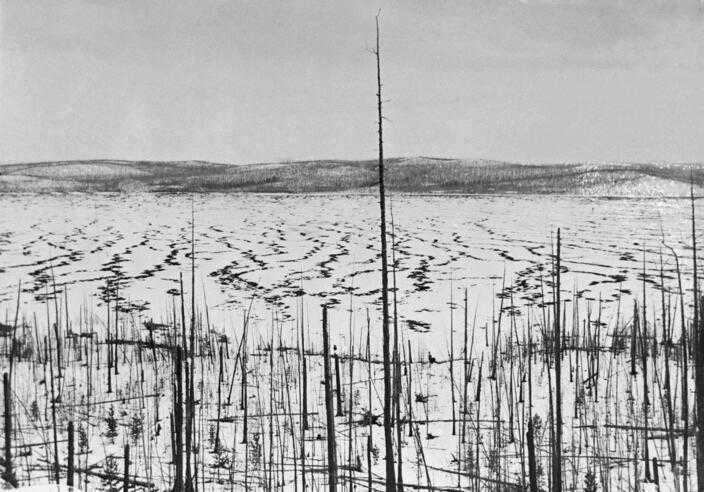
The research entered its third phase in 1964 and concluded in 1969. This period saw the development of more efficient and accurate techniques for separating cosmic matter from different natural objects, as well as the conduct of extensive theoretical studies and model experiments. In 1965, a hypothesis was proposed suggesting that the forest destruction in the vicinity of the meteorite impact was not only caused by the explosion itself, but also by the ballistic wave. Furthermore, the researchers expanded and refined their understanding of the energy of the Tunguska explosion’s light flash and its overall impact.
Main hypotheses
Since its appearance, the Tunguska phenomenon has been described in many different ways. There have been over 30 scientific hypotheses published about its nature, and the total number of theories proposed has exceeded a hundred. Currently, the scientific community mainly considers two main versions: the meteoritic and cometary hypotheses.
The most reputable theories regarding the Tunguska phenomenon agree that a large object from outer space exploded in the air over Podkamennaya Tunguska. The specific properties, origin, and entry angle of the object may vary in different descriptions. It could have been a meteorite or a fragment of an asteroid, and it might have been composed of ice or rocks. However, it is most likely that the object was non-monolithic and porous, as otherwise, large fragments would have been discovered by now.
The theory about the Tunguska meteorite being a comet was first proposed in the 1930s, and today experts, including those at NASA, agree that the meteorite was mainly composed of ice. This conclusion is supported by the descriptions of some eyewitnesses who reported seeing rainbow streaks and luminous clouds following the fall. Many Russian researchers also hold the same view, and numerical calculations have repeatedly confirmed this hypothesis.
However, it is important to note that the “meteorite” was not entirely made of ice; some fragments did reach the ground after the explosion. Nonetheless, the majority of the original material was scattered in the atmosphere or dispersed over a wide area. This pattern of decay would explain why witnesses described experiencing two successive shock waves from the explosion.
Mysterious Lake
A team of researchers from the University of Bologna has extensively examined Lake Cheko, which is situated eight kilometers away from the suspected center of the explosion. This peculiar lake is located in a remote and uninhabited area and possesses an unusual circular shape. Although the lake was previously investigated in the 1960s, it did not attract much attention at that time. The origins of Lake Cheko remain uncertain, as there are no records or evidence of its existence prior to 1908. In fact, when examining maps of tsarist Russia from the late 19th century, no signs of the lake were discovered.
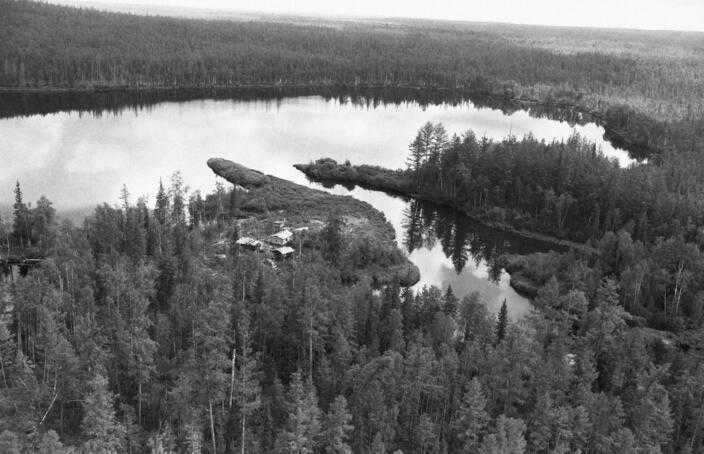
Image: © Aerial view of Lake Cheko and the scientific expedition’s research facility. TASS/Medvedev Vladimir
Previously, it was thought that Cheko had formed through karst processes, as an ancient volcanic crater, or by the Kimchu River flowing into it. However, Italian researchers led by Professor Luca Gasperini examined sedimentary rock samples and concluded that the lake is approximately one century old, coinciding with the time of the Tunguska meteorite impact.
Gasperini suggests that the lake’s unique shape is the result of a large fragment being ejected during the explosion and striking the ground at an angle, creating a funnel-shaped depression.
The research conducted by Italian scientists has generated significant attention, although it has been met with skepticism. Despite this, the findings do not fundamentally alter our understanding of the origins of the majority of the celestial body. Moreover, Professor Gasperini acknowledges that their hypothesis is compatible with nearly any previous theory. For instance, if the object in question was an asteroid, it is possible that a remaining fragment could be concealed beneath the lake. Alternatively, if it was a comet, its distinct chemical composition should be identifiable in the sediment’s deepest layers.
Tesla’s Outrageous Allegation
Theories surrounding the Tunguska event have traditionally been classified into categories such as man-made, geophysical, antimatter, religious, and synthetic. Among the most extraordinary ideas are the following: the collision of the Earth with an antimatter mass, resulting in a tremendous release of nuclear energy; the collision of the Earth with a fragment of comet Enke; the existence of a miniature “black hole”; or the expulsion of a massive amount of gas and mud. However, there exists another hypothesis, one that is quite unbelievable – it suggests that the culprit behind the Tunguska catastrophe was a very specific individual: Nikola Tesla.
Nikola Tesla, the renowned American physicist, was hailed as the “master of electricity” in the early 20th century. Among his numerous accomplishments, he conducted experiments concerning the wireless transmission of electricity over vast distances. Based on this concept, Tesla purportedly conducted an “energy super-shot” on June 30, 1908, from his laboratory to the vicinity of Alaska in order to practically evaluate the capabilities of his equipment. Unfortunately, due to the equipment’s imperfections, the energy emitted by Tesla traveled much farther than intended and resulted in tremendous devastation in the Podkamennaya Tunguska region. Upon learning about the catastrophic aftermath of his experiment, Tesla allegedly chose to remain silent about his involvement in the incident and discontinued such large-scale tests.
The weakness of this theory lies in the lack of evidence for Nikola Tesla conducting the experiment on June 30, 1908. Furthermore, the laboratory from which the supposed “super-shot” was fired no longer belonged to Tesla by that time.
Intriguing Details about the Tunguska Meteorite
- It has been determined that there is no noticeable crater at the site of the explosion, which would typically occur when a celestial body impacts the Earth’s surface. This suggests that the Tunguska object disintegrated at an altitude of approximately 5-7 km, without reaching the Earth’s surface.
- Most researchers of the catastrophe estimate the explosion’s energy to be equivalent to 104 Mt of TNT. A portion of this energy transformed into a luminous flash, while the remainder produced baric and seismic phenomena.
- A forested area spanning 2150 kilometers was devastated by the shock wave.
- According to certain calculations, the energy emitted by the light flash may have equaled up to 10% of the energy released during the explosion.
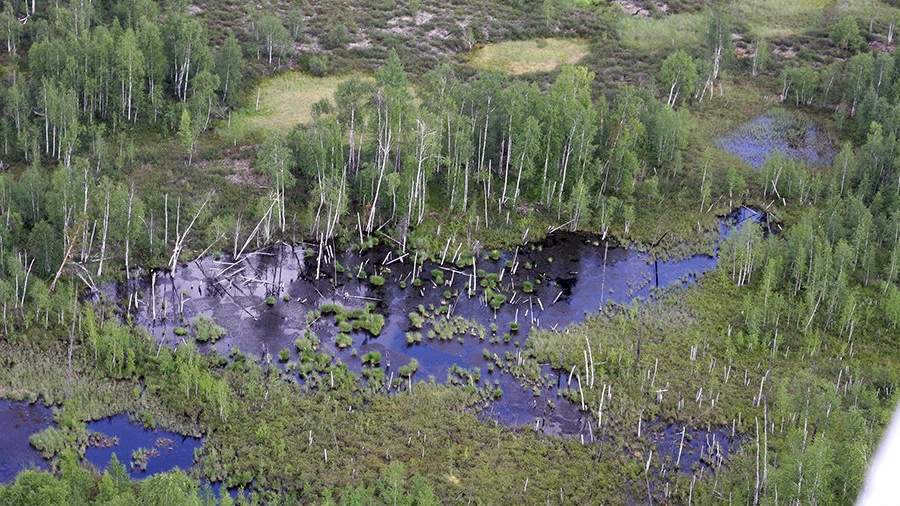
The Tunguska meteorite, which fell in Siberia in 1908, is considered the largest cosmic catastrophe in modern history. As we approach the 115th anniversary of this event on June 30, 2023, scientists are still unable to determine the exact cause. To learn more about the current theories and the connection between the Tunguska meteorite and Nikola Tesla, refer to the article “Izvestia”.
On the morning of June 30, 1908, a highly luminous celestial object was observed over the basin of the Podkamennaya Tunguska River, moving from southeast to northwest. As the object traversed the sky, it emitted thunder-like sounds and left a dense trail of dust in its wake. Following the appearance of this brilliant phenomenon, a tremendously powerful explosion resounded. Estimates place the explosion’s altitude between 5 and 15 kilometers, with a force equivalent to 10-40 megatons of TNT. To put this in perspective, the bomb detonated in Hiroshima in 1945 had a force of approximately 15 megatons. The blast wave decimated the forest over an area exceeding 2 thousand square meters. The explosion was so forceful that seismologists in Irkutsk, as well as several cities in Western Europe, detected tremors originating from the epicenter of this catastrophic event.
A couple of days later, the event was documented by Alexander Adrianov, an enlightener and ethnographer, in the publication “Siberian Life”. Nonetheless, the incident did not gain much attention as it took place in a distant and inaccessible region, with only a handful of local residents and nomadic Evenks serving as witnesses.
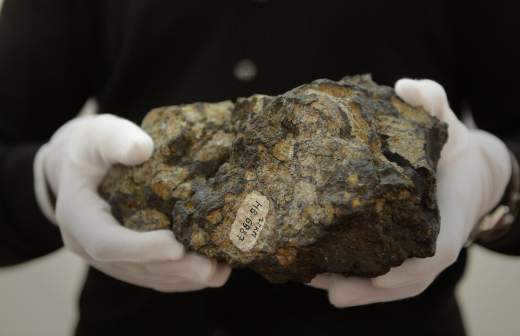
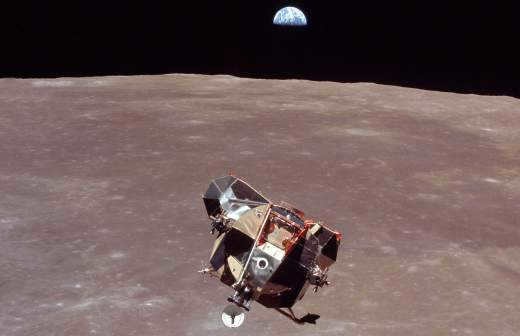
Theories about the Tunguska meteorite
There have been over 100 theories proposed about the Tunguska catastrophe. The most widely accepted theory is the comet theory, which suggests that the object that fell in the basin of the Podkamennaya Tunguska River was a comet. As it entered the Earth’s atmosphere, it rapidly vaporized due to the frozen gas and dust that make up its core. The sudden release of gas caused an explosion, and the remnants of the comet vaporized. An alternative theory suggests that the object was made of rock or iron, and either completely burned up in the atmosphere or its fragments have not yet been found. Another possibility is that an iron meteorite entered the Earth’s atmosphere at a specific angle, exploded, lost half of its mass, and then flew back into space, which would explain the absence of an impact crater. Other theories propose that the event in Siberia in 1908 could have been caused by a paleovolcano eruption, an unusual earthquake, a man-made disaster similar to a nuclear explosion, the crash of a spaceship, or other phenomena. However, none of these theories provide a comprehensive explanation of what actually happened.
For over a century, scientists have been unable to unravel the primary enigma of the 20th century – the descent of the Tunguska meteorite. Eyewitnesses of the incident were inhabitants of Eastern Siberia, who witnessed the passing of the “second sun.”
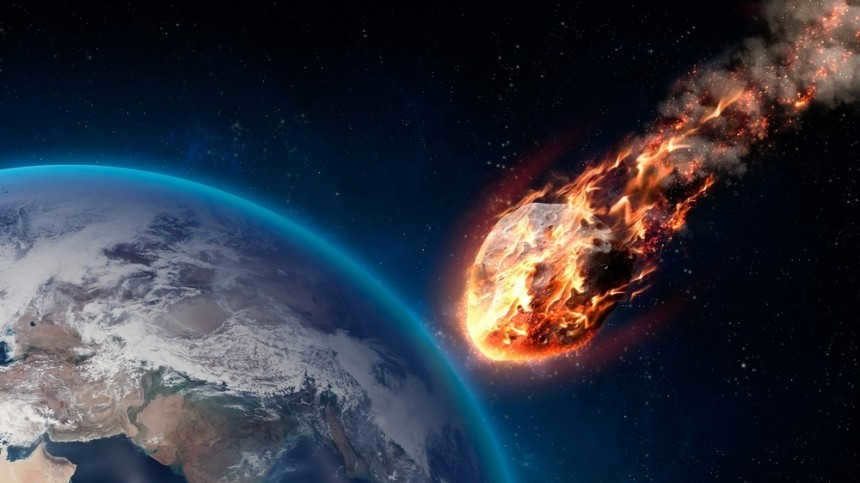
Photo: Depositphotos / Shad.off
Throughout the decades, scientists have proposed over 100 theories about the Tunguska meteorite event, but none of them have been scientifically proven. Even after more than a century, the Tunguska meteorite continues to hold onto its mysteries.
The Birth of the Tunguska Meteorite: A Phenomenon of Explosions and Flames
On the thirtieth of June in 1908, at approximately 7:00 local time, a mesmerizing event unfolded in the skies above the Podkamennaya Tunguska river basin, located in the Evenki district of the Krasnoyarsk region. Suddenly, a colossal fireball materialized, resembling a radiant second sun. Its brilliance was overwhelmingly intense, emitting scorching flames.
The bolide swiftly streaked across the sky, traversing from the southeast to the west in a matter of seconds. The firmament illuminated with a blinding burst, and at an altitude ranging from seven to ten kilometers, a cataclysmic explosion ensued. Subsequent investigations approximated its magnitude to be around 10-40 megatons, equivalent to 40,000 kilotons of TNT. To put this into perspective, in 1945, a single atomic bomb with a yield of 21 kilotons was sufficient to decimate the city of Nagasaki, and Hiroshima was obliterated by an 18-kiloton bomb.
What occurred during the Tunguska meteorite impact
Thankfully, no individuals were harmed during the incident. The impact took place in a vast uninhabited region of the Siberian taiga: approximately 80 million trees were felled, resulting in a massive forest fire. The sound of thunderous explosions could be heard up to a thousand kilometers away, and in certain areas, the ground trembled.
The nearest village to the disaster site was Vanavara. It was located approximately 70 kilometers from the epicenter of the explosion. This proximity allowed the locals to experience the terror of the event: people and animals were knocked off their feet by the shockwave, the ground shook, and windows were blown out, causing all household items to fly off the shelves.
“Out of nowhere, in the northern direction, the sky split in two, and a massive blaze emerged, stretching wide and high above the dense forest, completely encompassing the entire northern section of the sky. In that very moment, I was overcome with an intense heat, so much so that I had the urge to rip off my shirt and cast it aside. However, before I could react, the sky abruptly closed shut, accompanied by a tremendous crash. The force of it threw me off the porch, propelling me a considerable distance. Following the impact, there was a thudding noise, as if rocks were tumbling down from the heavens or cannons were being fired,” recounted one individual who happened to witness the extraordinary event.one of the villagers described what he saw.
Even nearer to the epicenter, approximately 30 kilometers southeast from there, resided the brothers Chuchanchi and Chekarena. Both of them were startled awake almost simultaneously by a powerful jolt, and they let out resounding screams of terror.
“The ground started to shake and move, a powerful gust of wind hit our tent and knocked it down. I was pinned down by the poles. Then I witnessed a horrifying sight: beams were falling, needles were ablaze, dry wood on the ground was on fire, and even the moss was burning. Smoke filled the air, stinging my eyes, it was scorching hot, dangerously hot, one could easily get burned,” recounted one of the individuals. One of them gave this account.
The shockwave then traveled twice around the world and was so intense that numerous observatories across the globe were able to document it. Following that, there was the most severe magnetic storm, which persisted for a duration of five hours.
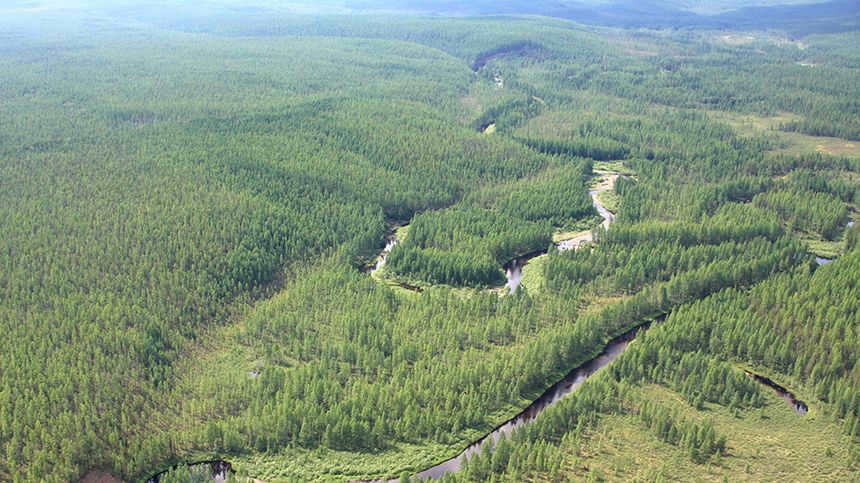
The Taiga region near the site of the Tunguska meteorite impact. © RIA Novosti / Vitaly Bezrukikh
Unusual atmospheric phenomena also resulted from the explosion. The night of June 30 to July 1, 1908 was exceptionally illuminated in various parts of Siberia, Central Asia, Europe, and Western Europe. Local residents witnessed speckled stars, a solar halo (a glowing ring around the Sun or Moon), and glowing clouds (the highest cloud formations in the mesosphere, composed mainly of water ice and tiny remnants of meteorites that burned up in the Earth’s upper atmosphere).
According to some eyewitnesses, the brightness was so intense that it would have been possible to read a newspaper with small print under the night sky.
These illuminated nights persisted for approximately two more months, but the light effects gradually diminished with each passing day.
It has been precisely 115 years since that point in time, and throughout these years, scientists have been attempting to unravel the central enigma of the century – what exactly caused it? Was it a meteorite that fell and exploded, a comet, ball lightning, the testing of new weaponry, or the arrival of extraterrestrial beings?
Further Reading
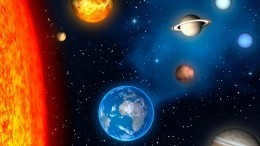
Discover fascinating space facts that were previously unknown to you
The Tunguska meteorite: Exploring its origins
Leonid Kulik, a renowned Soviet expert in mineralogy and meteorite research, embarked on the pioneering mission to unravel the mysteries surrounding the Tunguska meteorite. During a tumultuous period marked by the Civil War, organizing a scientific expedition was an uphill battle. As Kulik himself observed, the scientists were “destitute and tattered.”
However, being a man consumed by his passion, he achieved the unimaginable. In 1921, the Scientific Council of the Mineralogical Museum of the Academy of Sciences of St. Petersburg, where the scientist was employed, granted him permission to embark on a journey and even allocated funds with the expectation that he would procure vast quantities of meteorites. In essence, he managed to persuade his fellow colleagues by making this enticing offer.
Nevertheless, the greatest challenges were yet to come. When Kulik arrived at the location, he quickly realized that the search would be an arduous and time-consuming process due to the immense and treacherous terrain. The dense taiga, swamps, and extreme cold posed significant obstacles. Many members of the expedition group were unable to endure the harsh conditions and ultimately abandoned the mission, returning home. However, Kulik, driven by his quest for the truth, decided to stay behind for the winter, gathering information, interacting with the local population, and clinging onto hope for any possible leads. Unfortunately, his efforts proved to be in vain.
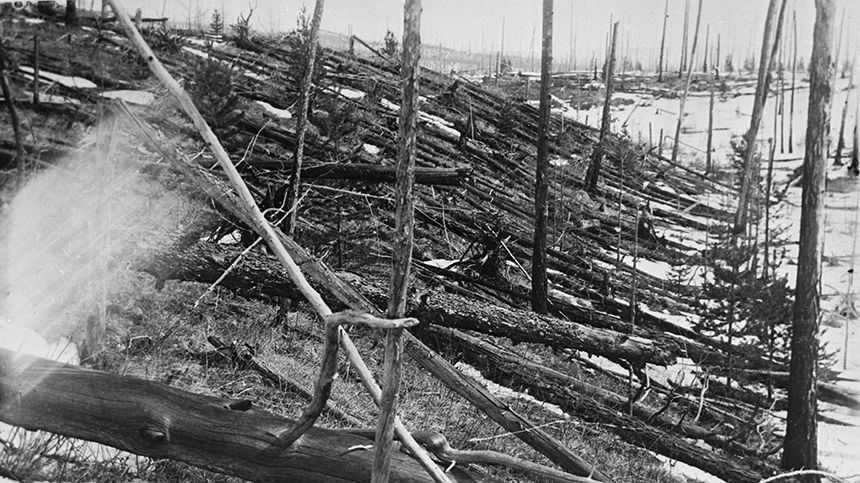
A perspective of the scorched woodland in the vicinity of the Tunguska meteorite explosion. © RIA Novosti / I. Zorkhin
After six years, the scientist made the decision to take another chance. By that point, he had become aware of a forbidden area in Tunguska. This area was known as the infamous dead forest – as per the folklore of local shamans, it materialized after the god of thunder, lightning, and fire, Agdy, descended upon the earth in the form of a fiery iron bird and launched flaming arrows. The neighboring Evenks, along with other residents, believed in this legend and steered clear of the forested region.
However, Leonid Kulik possessed the audacity to venture forth as a pioneer – in 2028, he assembled a new and sizable expedition, arrived in Tunguska, and discovered that ominous location. The sight was indeed awe-inspiring: vast stretches of fallen and charred trees in every direction.
“I am still unable to comprehend the disorderliness of the various sensations linked to this journey. Furthermore, I am unable to truly envision the magnificence of the overall scene of this extraordinary autumn. The landscape is incredibly hilly, resembling almost mountainous terrain, stretching for long distances, far beyond the northern horizon… Everything lies fallen and charred, and amidst this desolate expanse, a youthful twenty-year-old sapling emerges, bursting with vitality and determination to reach towards the sunlight and embrace life…” – the scientist chronicled in their journal.
One enigma that puzzled him was the observation that in the exact center of the presumed blast, the trees remained intact but were stripped of their branches, resembling telegraph poles. Additionally, there was a body of water in the middle of the forest – Kulik speculated that this could be the crater left by the meteorite. Unfortunately, the scientist lacked the necessary resources and favorable circumstances to thoroughly investigate the phenomenon, leaving him empty-handed.
Also consider

A time traveler has made eerie predictions for the year 2023, involving a meteorite and a missing liner.
In 1929 to 1930, the third expedition led by Kulik was the largest and most extensive one yet. They brought pumps and drilling equipment to the site to drain the sinkholes. However, all they found at the bottom of the pond was a stump of an older larch tree, indicating that the lake was naturally formed.
Despite the lack of success, Kulik managed to secure funding for another expedition in 1939. They drilled at a new site with a similar sinkhole, but unfortunately, their efforts were in vain.
Alien Greetings: New Discoveries at the Location of the Tunguska Meteorite Impact
Yuri Lavbin, a Soviet and Russian scientist, claims to have found evidence suggesting that the Tunguska meteorite may have originated from aliens. Lavbin dedicated approximately ten years of his life to investigating the catastrophe, establishing the Siberian Public-State Foundation called the “Tunguska Space Phenomenon.” Under his leadership, numerous expeditions were conducted in the Krasnoyarsk region.
In September 1994, while exploring the Tunguska disaster site, Lavbin stumbled upon a massive five-ton stone block, which he believed to be one of the remnants of the extraterrestrial object. However, subsequent chemical analysis failed to confirm this assumption.
In August 1998, Labvin presented two heavy metal rods to the scientific community that were discovered at different times near Vanavara. According to the scientist, one of the rods had melted into the rock, possibly originating from a comet, and was found at a depth of one and a half meters. The other rod was found near the railway embankment. Labvin claimed that the rods could not have been mechanically processed and their composition could not be determined due to a malfunctioning analyzer. He believed that this further indicated their extraterrestrial origin. However, his colleagues did not take these assumptions seriously.
In 2006, Labvin made another sensational discovery in the Evenki taiga – quartz cobbles with mysterious hieroglyphs. According to the scientist, these hieroglyphs were applied to the stone’s surface in a technogenic manner, possibly through the impact of plasma.
Also, check out these related articles


Nostradamus’ astonishing prophecies: what lies ahead for the globe in 2023
Additionally, he stated that quartz harbors extraterrestrial elements that are unattainable on our planet. Furthermore, certain layers of the mineral are fused together, each displaying enigmatic symbols from an unfamiliar alphabet.
Lovebin, in his research, mentioned multiple areas of destruction caused by the Tunguska meteorite. The object that fell in Vanavara was just a small pebble, according to the scientist. However, larger remnants of the meteorite were found in other locations. Lovebin reached these conclusions by analyzing space photos. He discovered that the celestial body had disintegrated into at least 10 fragments before colliding with Earth. Lovebin suggested that the search for these fragments should be focused in the western part of Siberian space, rather than the eastern part as previously believed.
Insights from abroad: what Italian scientists discovered about the Tunguska meteorite
Aside from scientists from the Soviet Union and Russia, foreign researchers also sought to unravel the mystery surrounding the Tunguska meteorite. The first international expedition to investigate the catastrophe took place in 1990, with the participation of European scientists. Unfortunately, this trip did not yield any fruitful results.
A year later, a team of Italian experts ventured into the Siberian taiga. Led by Professor Mitti Galli, a 70-year-old from the University of Bologna, the team made an intriguing discovery in the tree rings that bore the scars of the 1908 event: a mineral called enstatite, which is commonly found in stone meteorites. This finding led to the hypothesis that the Tunguska meteorite was actually a swarm of comet meteorites.
In their continued quest for answers, the Italians persevered and in 2007, a team of researchers, headed by Luke Gasperini, released an article in the Terra Nova journal presenting their findings on Lake Cheko. This lake is located eight kilometers northwest of the epicenter of the Tunguska event.
Further reading

The ruler of destiny in the heavens: what kind of trouble will Saturn bring from June 17, 2023
By the way, back in 1999, Russian scientists Koshelev and Florensky discovered the reservoir, but at that time it went unnoticed. However, their Italian counterparts decided to delve deeper and concluded that the depth, cone-shaped water body, and its age indicate that it is a crater from the impact of a celestial object. Presumably, the Tunguska meteorite.
In 2012, the Italians announced after further research that they had found a stone fragment of a meteorite under the reservoir’s bottom, at a depth of ten meters, which created the crater. However, they were unable to extract a sample of meteoritic material at that time. The scientists planned to return to the site with a drilling rig to complete what they had started.
It appeared that the truth was just within reach, but in 2016, Russian scientists extracted two samples from the depths of Lake Cheko and determined their age based on the levels of cesium, lead, and radium isotopes. The findings contradicted the earlier speculations of the Italian researchers. It was discovered that the lake had a significantly greater age than the catastrophic event – expert estimations suggest that the sedimentary rocks in the reservoir date back anywhere from 280 to 390 years.
Top 8 theories on the origin of the Tunguska meteorite
The Tunguska event remains an enigma, with scientists attempting to unravel its mysteries for 115 years. Various hypotheses have been proposed, ranging from conventional to fantastical. Among them, there are a few that have gained significant popularity.
- The most widely accepted theory is the meteorite impact hypothesis. However, researchers are still uncertain about the composition of the meteorite – whether it was made of stone or iron. Some even suggest that it could have been a swarm of meteorites. Interestingly, no traces of these celestial bodies have been found, including any remnants or craters. Instead, what remains is the surviving section of the forest. Proponents of this theory propose that the meteorite could have completely disintegrated upon impact.
- The second hypothesis suggests that the event was caused by a comet. Unlike a meteorite, a comet is primarily composed of ice. It is believed that as the comet entered the Earth’s atmosphere, the ice rapidly evaporated, leaving no trace behind after the explosion. Notably, one of the proponents of this theory was physicist Gennady Bybin, who dedicated over 30 years to studying the Tunguska anomaly. Bybin’s conclusions were partly based on the observations of Kulik, who discovered an ice-like substance covered in peat during his expedition to the Tunguska disaster site, although he did not attach much significance to it.
Also check out
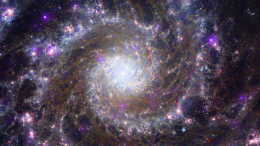
A new planet has been found by scientists, proving that the world knows no boundaries.
- The concept of the antimatter collision hypothesis was first proposed by American scientist Lincoln La Paz in 1948. According to this hypothesis, matter and antimatter from outer space collided, resulting in their mutual annihilation and the release of a significant amount of energy. The presence of radioactive isotopes in the debris from the explosion site provided evidence to support this theory. However, due to the limited understanding of antimatter properties in scientific research, there is a fair amount of skepticism surrounding this idea.
- One possible explanation is that a massive sphere of electricity detonated at the location of the accident. Ball lightning may have been caused by intense electrical activity or rapid changes in the atmospheric electric field. The notion of ball lightning was initially proposed by scientists as far back as 1908, and gained significant popularity in the 1980s. However, ball lightning remains a topic of ongoing research, which leaves this explanation with many unanswered questions.
Also check out these articles
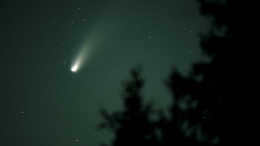
An unidentified object fell in the Kaluga region.
- There is also a theory suggesting that the Earth collided with a cloud of cosmic dust. This theory was proposed in 1908 by French astronomer Felix de Roy. In 1932, Soviet academician Vladimir Vernadsky agreed with this theory, adding that the movement of cosmic dust in the atmosphere caused the appearance of silvery clouds in the night sky. Another 30 years later, in 1961, biophysicist Gennady Plekhanov from Tomsk provided a more detailed explanation of what occurred. He stated that the Earth crossed paths with an interstellar cloud of cosmic dust, one of its conglomerates being what is now known as the Tunguska meteorite.
- The Tunguska meteorite is a celestial object that caused a massive explosion near the Podkamennaya Tunguska River in Russia. This incident took place on June 17, 1908, and its enigma remains unsolved to this day.
- The Tunguska meteorite is also known as the Tunguska Phenomenon, and it is sometimes referred to as TKT – Tunguska Cosmic Body.
- In this article, we will explore different theories regarding the mysterious explosion that occurred at the beginning of the 20th century and attempt to determine whether it was a man-made event or solely the result of natural forces.


The Impact of the Tunguska Meteorite
During the early morning hours of June 17, 1908, a brilliant flash illuminated the sky over Siberia. Soon after, witnesses reported the appearance of a celestial body streaking towards the Earth with an ignited tail, hurtling at an incredible velocity.
Moments later, a thunderous explosion reverberated across the region, its magnitude surpassing that of the atomic bombs dropped on Hiroshima and Nagasaki by two thousand times.
Aftermath of the disaster
The cataclysmic event at Tunguska led to the obliteration of approximately 2,000 square kilometers of woodland, along with the devastation of countless animals and avian species. The impact of the explosion was so immense that it reverberated around the world not once, but twice.
In England, barometers registered a sudden surge in atmospheric pressure. Residents residing in the region spanning from Siberia to Western Europe were able to witness three consecutive days of ethereal white nights.
Curiously, German scientists were able to observe the formation of shimmering clouds, comprised of frozen particles, which were thought to be the result of a volcanic eruption. However, there were no recorded volcanic eruptions during that time.
Strangely, this incident did not garner much attention at the time. It was only several decades later that scientists began to take a more profound interest in what has come to be known as the Tunguska meteorite.
However, despite extensive research efforts, the true nature of the explosion remained a mystery. As a result, numerous theories and speculations emerged, giving birth to the phenomenon now known as the Tunguska meteorite.
Accounts of Witnesses
Fortunately, interviews were conducted with residents who lived in close proximity to the incident. Without exception, they all reported witnessing strange flashes resembling lightning in the sky in the days leading up to the explosion.
Following the explosion, the ground shook violently and a deafening rumbling sound persisted for approximately 20 minutes. Some witnesses even claimed that there were multiple explosions, not just one.
Fascinatingly, seismographic stations in Russia, Europe, and America recorded an unprecedented oscillation of the Earth’s crust on that fateful day.
According to reports, a profound stillness enveloped the area following the event. The atmosphere took on a somber tone as the sky turned ominous, and the once vibrant leaves on the trees underwent a dramatic transformation, shifting from a vibrant yellow to a deep, inky black within a matter of hours. Additionally, a mysterious, ethereal barrier appeared on the horizon, emanating a shimmering silver hue that persisted for a staggering eight hours in the direction of Podkamennaya Tunguska.
Nevertheless, due to the conflicting nature of the eyewitness accounts, it was necessary to approach their testimonies with caution.
Tunguska meteorite impact site
Today, the Tunguska meteorite impact site is a remarkable sight, with a multitude of new trees that have grown in the area. Experts believe that the active growth of these trees can be attributed to genetic mutations.
Interestingly, such mutations are not typically observed in areas where meteorites have fallen, which raises intriguing possibilities. Some scientists propose that the impact of the Tunguska meteorite generated a powerful electromagnetic field.
Even now, evidence of the cataclysmic event can be seen in the form of fallen trees lying in a single direction. The charred trunks serve as a stark reminder of the extraordinary catastrophe that took place.
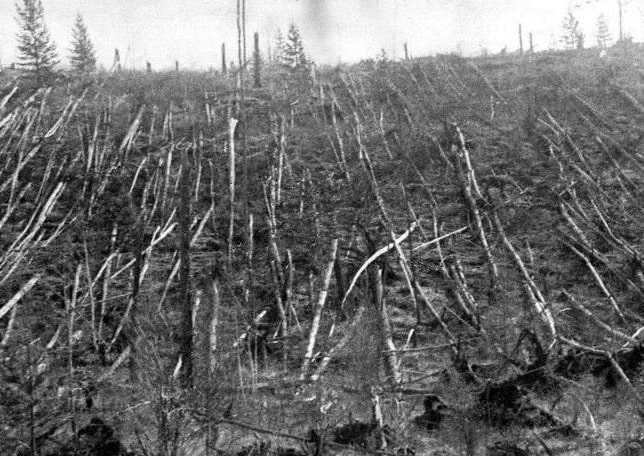
Recently, there has been a renewed interest among scientists in the investigation of the Tunguska meteorite impact site. However, there are still more questions than answers surrounding this mysterious event. One intriguing detail is that the area where the meteorite landed bears a resemblance to the shape of a bird or a butterfly.
The True Location of the Tunguska Meteorite Impact
If indeed a celestial body did crash onto the Earth, it would be expected to leave behind a massive crater. Surprisingly, no such crater has been found to date.
Scientists who support the official theory propose that the space object likely exploded in the atmosphere, scattering its fragments over hundreds of kilometers.
This would explain the absence of any traces of the meteorite at the epicenter of the explosion.
Located 8 km away from the explosion site lies Lake Checo, with a depth of up to 50 meters. A hypothesis proposed by certain foreign geologists suggests that the lake formed as a result of the impact of the Tunguska meteorite.
To investigate this theory, a team of Russian geologists analyzed sediment samples from Lake Cheko and determined that its age is approximately 300 years, possibly even older.
The comet disintegrated prior to descending
Several researchers propose that the comet possibly disintegrated while still in the atmosphere, given its composition of ice and cosmic debris. The detonation transpired approximately 5 kilometers above the Earth’s surface.
However, even in this scenario, complications arise. The reality is that scientists succeeded in discovering impeccably intact remnants of cometary debris and water within the peat (refer to intriguing comet facts).
Mono and Chromatic
Andrei Tyunyaev, a renowned Russian author and journalist, advocates for the existence of mono and chromatic singularities.
Mono singularities engulf any nearby objects, converting them into spacetime. Conversely, chromatic singularities have the capability to generate this substance, thereby establishing a cyclic process.
Therefore, it can be inferred that the Tunguska meteorite may have resulted from the activity of a chromatic singularity, which could have formed in close proximity to Earth or emerged from within our planet.
It is worth noting, however, that chromatic singularities remain poorly comprehended, and many scientists remain skeptical of their existence.
Devil’s cemetery
The study of the Tunguska meteorite was also influenced by physicists. It all began with an intriguing and simultaneously terrifying tale that emerged approximately three decades after the catastrophe.
An interesting fact is that in close proximity to the Tunguska event, there exists an anomalous zone known as the Devil’s Cemetery.
Consequently, a group of local shepherds lost a number of cows that had been taken to the river for watering. Upon discovering the loss, they embarked on a search for the missing animals alongside their dogs. It wasn’t long before they stumbled upon a barren area devoid of any vegetation.
It was within this desolate landscape that the shepherds encountered the torn remains of their cows and numerous dead birds. Their dogs began barking uncontrollably and eventually fled from the scene.
The Tunguska meteorite fall site has been the subject of exploration by numerous expeditions. Four of these expeditions vanished without a trace, while the others reportedly perished after venturing into the Chertov cemetery.
According to accounts from local inhabitants, strange lights can be observed at night in the vicinity of the Tunguska event, accompanied by eerie screams.
Tunguska meteorite and unidentified flying objects
When discussing the Tunguska meteorite incident, it is important to acknowledge an alternative theory, despite its implausibility. As proposed by science fiction author Kazantsev, the explosion was potentially caused by a crashed extraterrestrial spacecraft.
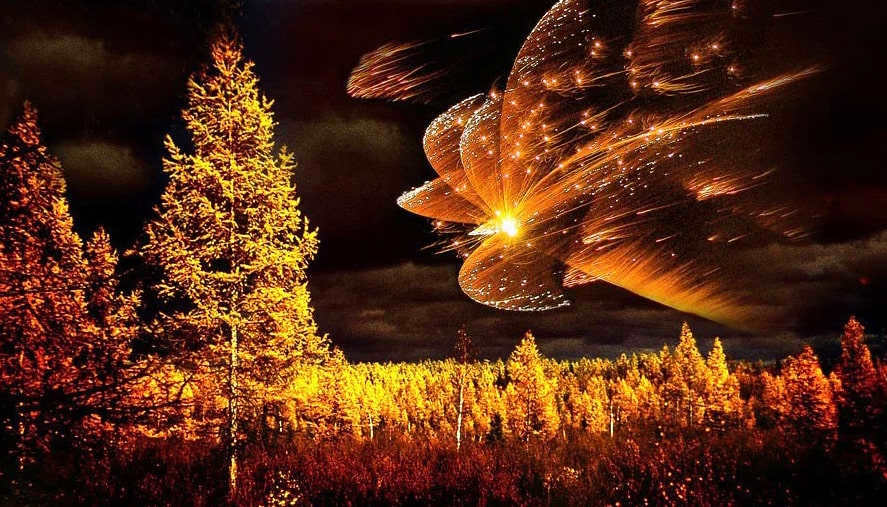
Furthermore, Kazantsev suggests that the extraterrestrials intentionally steered their spacecraft towards the taiga instead of a populated area in order to prevent human casualties.
It is impossible not to mention the enigmatic planet Nibiru, which has been the subject of much discussion recently.
Kazantsev also highlighted that the Tunguska explosion occurred in the atmosphere. In fact, scientists support this concept.
Following medical examinations of the local residents, no cases of radiation sickness were documented, which supports the theory of an atmospheric explosion.
Summary
Due to the lack of consensus among researchers regarding the Tunguska meteorite, numerous theories have emerged.
Currently, there exist over a hundred different theories, including one that implicates Nikola Tesla (refer to intriguing facts about Tesla) and his groundbreaking electricity experiments as the cause of the Tunguska explosion. However, the validity of this theory remains unconfirmed.
